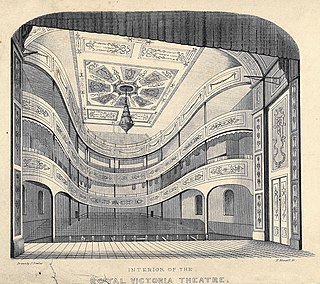Related Research Articles
The 1928 Australian Championships was a tennis tournament that took place on outdoor Grass courts at the White City Tennis Club, Sydney, Australia from 21 January to 6 February. It was the 21st edition of the Australian Championships, the 5th held in Sydney, and the first Grand Slam tournament of the year. The singles titles were won by Frenchman Jean Borotra and Australian Daphne Akhurst.

Garnet Walch, was an Australian writer, dramatist, journalist and publisher. The youngest son of Major J.W.H. Walch, of H.M. 54th Regiment, he went on to become the most popular, and arguably the most successful, writer for the Australian stage during the 1870s and 1880s, While many of his works were localised and updated adaptations, it was his ability to tap into the public's mood and desires by expressing sentiments and making satirical allusions that made his works so popular. Walch wrote a wide array of genres and forms, including "serious" dramatic works, comedies, pantomimes, burlesques, melodrama, and comediettas.
William Mower Akhurst was an actor, journalist and playwright in Australia.
It Is Never Too Late to Mend is an Australian feature-length silent film written and directed by W. J. Lincoln. It was based on a stage adaptation of the popular 1865 novel It Is Never Too Late to Mend: A Matter-of-Fact Romance by Charles Reade about the corrupt penal system in Australia. It was called "certainly one of the best pictures ever taken in Australia."

The Royal Victoria Theatre, often referred to as the Victoria Theatre or The Old Vic, was a theatre in Sydney, Australia, the first large theatre in the city. It opened in 1838; operas, plays, pantomimes and other events were held, and leading entertainers performed at the theatre. It was destroyed by fire in 1880.

The Bunyip, also known by the longer title The Enchantment of Fairy Princess Wattle Blossom, was written by Ella Palzier Campbell. The pantomime was a highly successful musical comedy that toured Australia for a decade within Fuller Brothers theatre circuit. The show was produced by Sydney entrepreneur Nat Philips. The premiere of the show ran for at least 97 performances and was revived several times over the following decade.
The Royal Lyceum was a small theatre in York Street, Sydney founded in 1854, which was redeveloped and renamed many times, finally as the Queen's Theatre, by which name it closed in 1882.
Frank Towers (1835–1886) was an English actor, playwright and stage producer.

The Prince of Wales was a theatre in Castlereagh Street, Sydney, New South Wales. It was destroyed by fire and rebuilt twice; the second time as the Theatre Royal.
Richard Stewart was an English stage actor who settled in Australia. He is best remembered as the father of Nellie Stewart.

George Curtis Fawcett Rowe, was an English actor, manager and dramatist, whose career began in Australia as George Fawcett; later he was billed as George F. Rowe and worked in Britain and America, where he died. Well known for his portrayal of Wilkins Micawber in his own version of David Copperfield, he was a talented, but "impatient", playwright and actor.

John Rodger Greville was an Irish-born comic actor, singer, songwriter and stage manager who had a long career in Australia.
The Prince of Wales Theatre, with its successor, the Royal Lyceum, was a short-lived performance venue in Lonsdale Street, Melbourne, Australia.

Alfred Clint was an Australian cartoonist and theatrical scene painter and member of a family of artists.
Henry Richard Harwood was an Australian actor and theatre manager.

Minnie Everett was an Australian ballet-mistress and producer, closely associated with the J. C. Williamson's company. She was the world's first woman producer of Gilbert and Sullivan operettas.
Eleanor Carey was a stage actress in Australia and America.
Margaret Esme Dickinson was an Australian ballet dancer, a popular performer in J. C. Williamson's pantomimes. She married a dancing partner, who was already engaged to his previous dancing partner, creating a scandal.
Fanny Emily Mary Hooper, known as Minnie Hooper, was an Australian dance instructor and ballet mistress. She has been credited, with Jennie Brenan and Minnie Everett, with maintaining the high standard of Australian dance and ballet in the 1920s, between the reigns of Emilia Pasta and Anna Pavlova. She had a long series of contracts with J. C. Williamson's and conducted classes at her dance studio on Pitt Street, Sydney.

Rose Edouin Bryer, also known as Rose Edouin, Mrs G. B. W. Lewis and Rose Edouin Lewis was a British actress and playwright who lived for some years in India and Australia. She and her siblings were child performers. She married George Benjamin William Lewis. She returned to acting working, in the UK and South Africa, after they ran short of money in the 1890s. She was one of the first women in Australia to play the title part of Hamlet. After her husband died in Australia she returned to Britain where she continued to act in Shakespeare's plays.
References
- ↑ "PANTOMIMES IN MELBOURNE". The Lorgnette . Vol. XXIV, no. 1806. Victoria, Australia. 6 January 1882. p. 4 (Edition 1). Retrieved 5 September 2023– via National Library of Australia.
- ↑ Fothringham p 218-232
- ↑ "OUR AMUSEMENTS". Sydney Punch . New South Wales, Australia. 6 January 1872. p. 9. Retrieved 5 September 2023– via National Library of Australia.
- ↑ Fotheringham p lvi
- ↑ "THE CHRISTMAS FESTIVITIES". The Age . No. 4724. Victoria, Australia. 27 December 1869. p. 3. Retrieved 5 September 2023– via National Library of Australia.